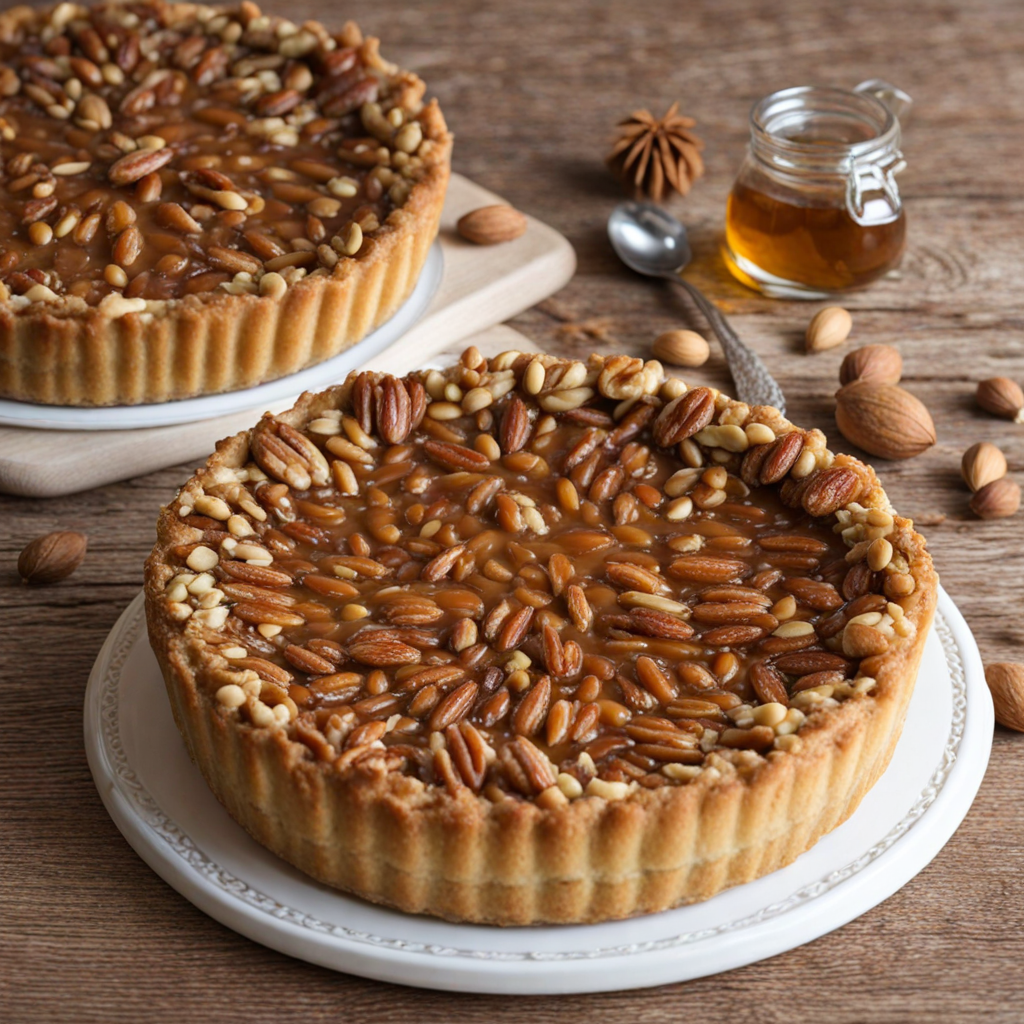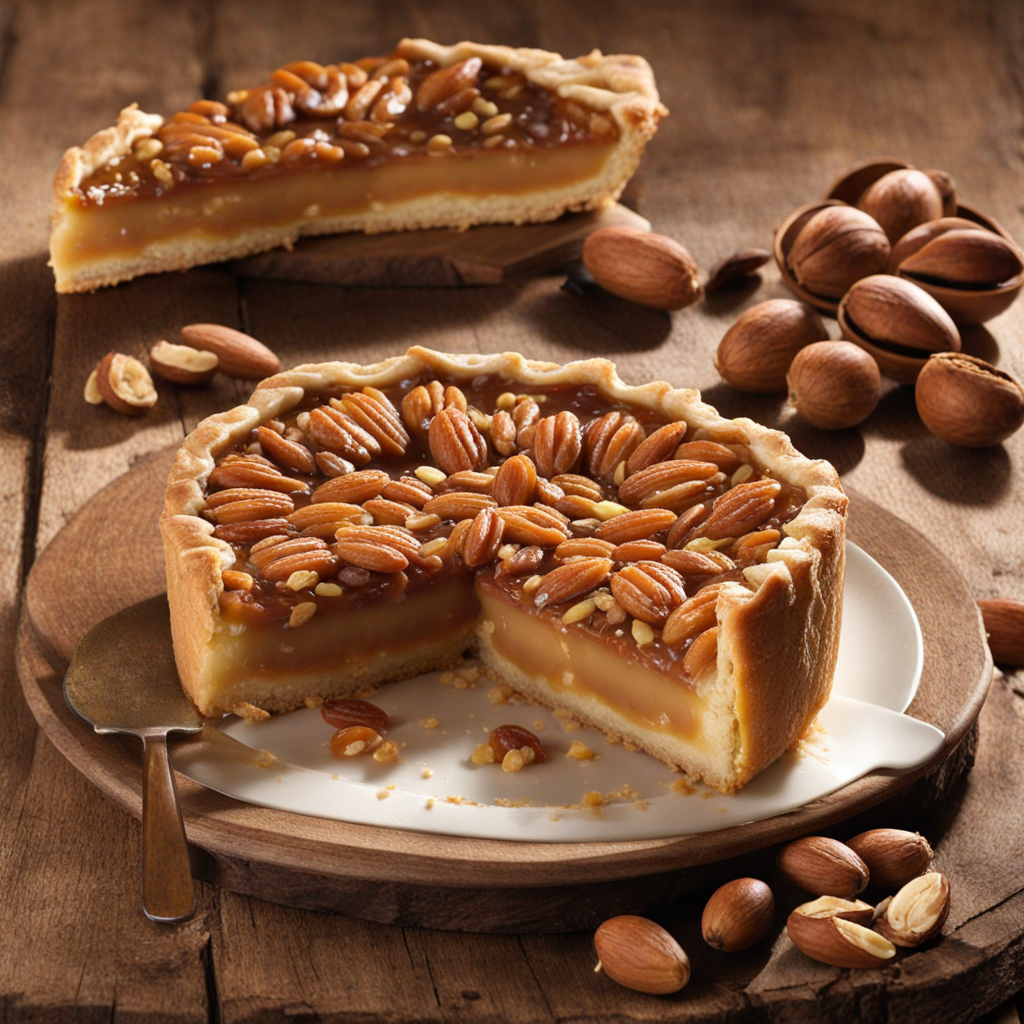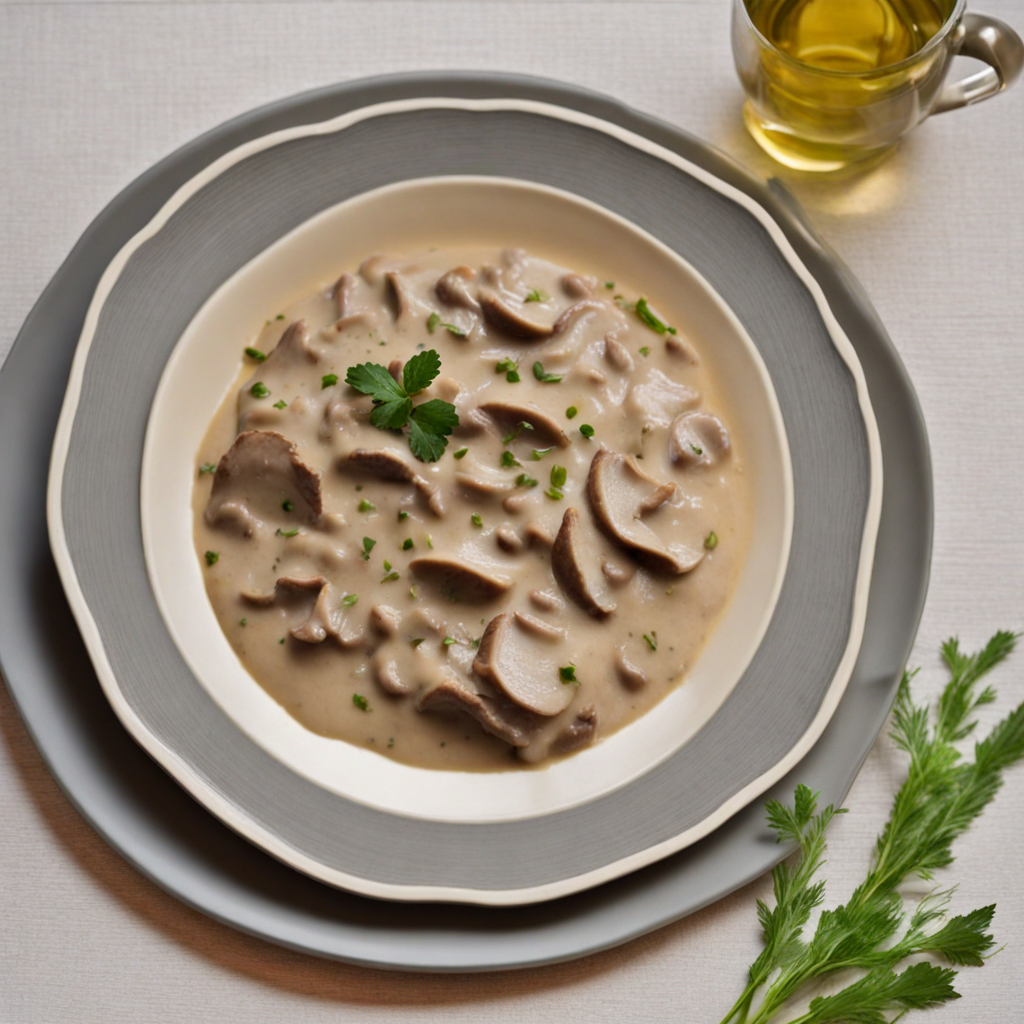Engadiner Nusstorte
Engadiner Nusstorte, or Engadine Nut Cake, is a delectable Swiss dessert that hails from the picturesque Engadine region. This rich, buttery pastry is renowned for its unique combination of flavors and textures. The cake features a crisp, golden-brown crust that encases a sumptuous filling made primarily of caramelized nuts, typically walnuts, and a delightful blend of cream, sugar, and a hint of vanilla. Each bite offers a satisfying crunch that contrasts beautifully with the soft, sweet filling, creating a symphony of taste that is both indulgent and comforting. What sets Engadiner Nusstorte apart is its distinctively sweet and nutty flavor profile. The walnuts are often lightly toasted before being incorporated into the filling, which enhances their natural nuttiness and adds depth to the cake. The caramelization process brings out a rich sweetness that complements the creaminess of the filling, creating a harmonious balance that is not overly sweet. This delightful treat pairs wonderfully with a cup of coffee or tea, making it a perfect accompaniment for afternoon indulgence or a special occasion. Traditionally, Engadiner Nusstorte is beautifully presented, often adorned with a dusting of powdered sugar that adds a touch of elegance. It is a cake that not only satisfies the sweet tooth but also provides a glimpse into Swiss culture and culinary heritage. Whether enjoyed as a dessert after a hearty meal or as a mid-day snack, this cake is sure to captivate anyone looking to explore new tastes and flavors, making it a must-try for food enthusiasts and dessert lovers alike.
How It Became This Dish
Engadiner Nusstorte: A Culinary Gem from the Swiss Alps In the heart of Switzerland's Engadin Valley lies a culinary treasure that has captivated both locals and visitors alike for centuries: the Engadiner Nusstorte. This decadent nut tart, with its rich buttery crust and luscious filling of caramelized nuts, is more than just a dessert; it is a symbol of the region’s cultural heritage, culinary ingenuity, and the natural bounty of the Swiss Alps. Origins: A Taste of Tradition The origins of Engadiner Nusstorte can be traced back to the 19th century, specifically to the picturesque village of Zuoz in the Upper Engadin region. The tart is believed to have been created by local bakers who sought to utilize the abundant resources available in their surroundings, particularly nuts and cream. The Engadin Valley is known for its favorable climate for growing walnuts, and the tart’s key ingredient, walnuts, reflects the region's agricultural practices. The earliest recorded mention of Engadiner Nusstorte dates to 1899, when it was made by a local baker named Johannes D. R. S. M. Von Däniken. However, the recipe likely existed in various forms among local families prior to this documentation. The tart became more widely recognized in the early 20th century, as it was served in local inns and bakeries, quickly becoming a staple of Engadin households. Cultural Significance: More than Just a Dessert Engadiner Nusstorte is not merely a delicious confection; it embodies the spirit of the Engadin Valley and its people. The tart serves as a culinary emblem of Swiss hospitality, often presented to guests during festive occasions, family gatherings, and celebrations. It is a symbol of generosity and warmth, as the rich flavors and textures invite sharing and togetherness. The tart’s significance extends beyond the dining table. In the Engadin region, it is often associated with traditional customs and events. Festivals celebrating local harvests and cultural heritage frequently feature Engadiner Nusstorte as a centerpiece. Its presence at these events reinforces community bonds and highlights the importance of regional culinary traditions. The tart is also a source of pride for local artisans and bakers. In recent years, efforts have been made to preserve the authenticity of the recipe, ensuring that it remains a true representation of Engadin culture. This commitment to tradition is evident in the meticulous preparation methods still employed by local bakers, who often use hand-rolled dough and carefully sourced ingredients. Development Over Time: An Evolving Recipe As the Engadiner Nusstorte gained popularity, its recipe underwent subtle transformations while maintaining its core essence. Traditional versions of the tart feature a shortcrust pastry filled with a mixture of caramelized walnuts, cream, sugar, and sometimes a hint of rum or vanilla. However, modern interpretations have emerged, incorporating variations such as chocolate layers, different nuts, or even fruit fillings. These adaptations reflect the evolving tastes of contemporary diners while honoring the traditional roots of the dessert. One notable modern development is the growing emphasis on organic and locally sourced ingredients. Many bakers in the Engadin Valley have embraced sustainable practices, choosing to use organic flour, butter from local dairies, and nuts sourced from nearby orchards. This movement not only enhances the flavor of the tart but also aligns with a broader trend in the culinary world that prioritizes environmental stewardship and quality. Additionally, the rise of tourism in the Engadin region has further popularized Engadiner Nusstorte beyond Switzerland's borders. As visitors flock to the area for its stunning landscapes and outdoor activities, they often seek out local delicacies, making the tart a must-try item. This exposure has led to an increased demand for Engadiner Nusstorte in gourmet shops and restaurants across Switzerland and even in international markets. Engadiner Nusstorte in the Culinary World Today, Engadiner Nusstorte is celebrated not only in Switzerland but also in the global culinary landscape. It has earned a place among the pantheon of Swiss desserts, joining the ranks of fondue, raclette, and chocolate. Culinary enthusiasts and food historians alike recognize its significance in Swiss gastronomy, and it has even been featured in numerous cookbooks and food blogs. Food festivals dedicated to Swiss cuisine often showcase Engadiner Nusstorte, allowing chefs and bakers to demonstrate their skills and creativity in preparing this beloved tart. Competitions celebrating traditional Swiss desserts frequently include categories for the best Engadiner Nusstorte, further elevating its status in the culinary community. Moreover, the tart's unique flavor profile and texture make it a versatile dessert. It pairs beautifully with coffee, tea, or even a glass of dessert wine, making it an ideal choice for both casual gatherings and formal occasions. Its adaptability has led to its integration into various culinary traditions, with chefs around the world experimenting with the tart's classic elements to create innovative dishes. Conclusion: A Sweet Legacy The Engadiner Nusstorte stands as a testament to the rich culinary heritage of the Engadin Valley and Switzerland as a whole. Its journey from humble origins to a celebrated gastronomic delight reflects the deep connection between food, culture, and community. As bakers continue to honor traditional methods while embracing modern approaches, the tart remains a beloved symbol of Swiss hospitality and creativity. Whether enjoyed in a cozy mountain inn or at a festive gathering, Engadiner Nusstorte is a reminder of the simple pleasures of life, the beauty of shared moments, and the enduring legacy of a recipe that has stood the test of time. In every bite, one can taste not only the sweetness of the caramelized walnuts but also the spirit of the Engadin Valley—a place where nature, tradition, and culinary artistry come together in perfect harmony.
You may like
Discover local flavors from Switzerland







